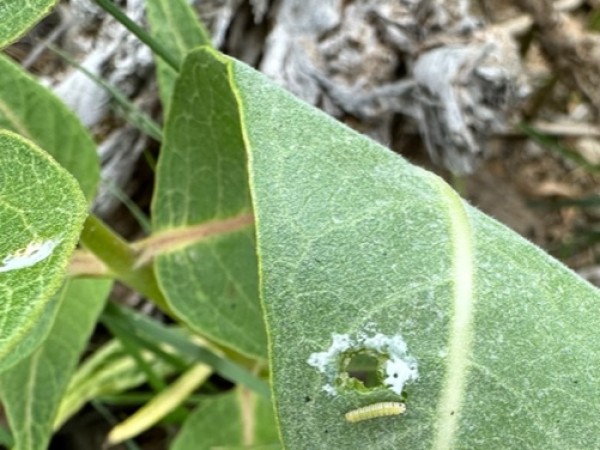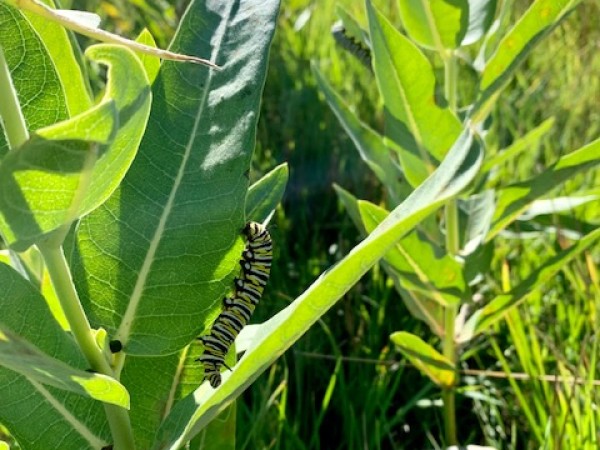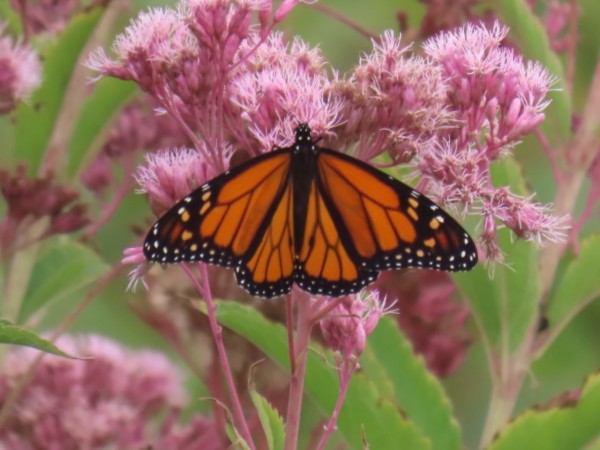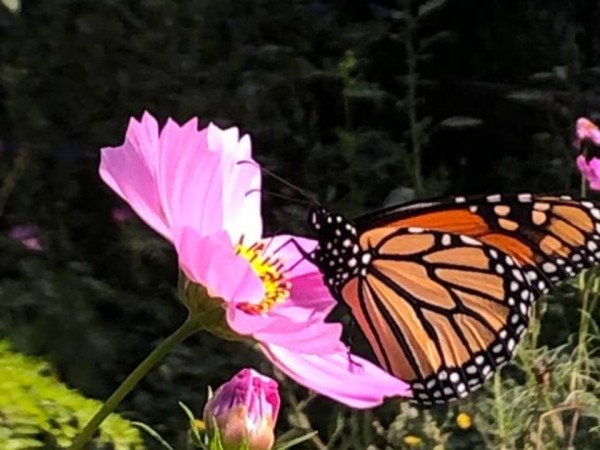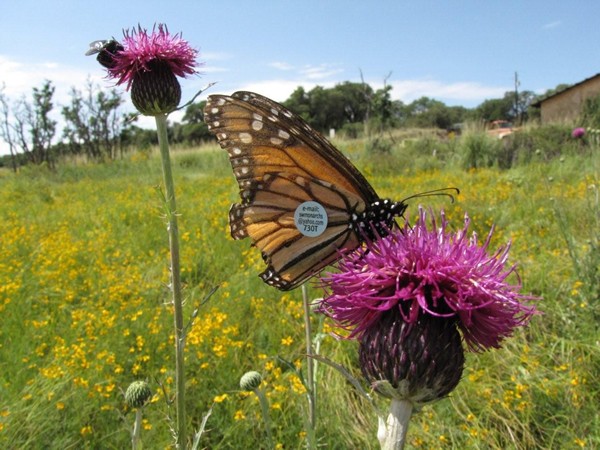Letter From Gail Morris: Western Monarch Fall 2023 Report #1
published: 09/11/2023
Monarchs are on their way with higher than anticipated numbers flying this Fall! Large numbers of monarch larvae are still being found in fields of northern Utah – a harbinger of more adult monarchs to come.
Monarch Sightings
Be sure to check out our Journey North monarch observational maps to see where monarchs are near you!
Western Monarch Migration Updates
We kick off the Fall Migration season with a series of “From the Field” reports from around the West.
Dr. David James, Monarchs of the Pacific Northwest: “The migration is in full swing! Monarchs have begun leaving the PNW heading for destinations south. All of Oregon’s monarchs go to California. Most of the butterflies in WA and BC also end up in California but a few may take a more easterly route and end up in locations as yet unconfirmed. The majority of Idaho’s monarchs also appear to take this route and efforts are underway to learn more about this, with increased tagging efforts in that state. So how did our summer monarch population in the PNW compare with that seen in 2022? During June-August 2022, there were 544 confirmed sightings in OR, WA, ID and BC. During the same period this year, there were 416, which is about 76% of the 2022 total. Not bad for a population that was beset with weather problems in California during winter and spring.”
Diana Magor, Santa Cruz, California: “Monarchs have been showing up here in Santa Cruz for over a month now, with many ovipositing on whatever milkweeds they can still find. Many have been thin, tattered females, some of which have relished the honey water I give them. So we have eggs, larvae, chrysalises, and eclosing adults on everything from tropical to narrow-leaf to Heartleaf milkweeds, which I have been watering through the summer. These are apparently not in reproductive diapause, and we had zero monarchs this Spring after the overwintering ones departed, so not resident monarchs either. A most unusual year.”
Rachel Taylor, Salt Lake City, Utah: “It has been a busy past four weeks with so many people throughout the northern half of Utah reporting sightings with photos. Lots of comments coming in that this is the first time they have seen a monarch in their gardens. Late August, Jennifer in SLC [Salt Lake City] found more than 200 eggs in her yard in one week. Her entire yard is a pollinator garden with ample and diverse native milkweed. We did a tagging event in American Fork on Sept 5 and tagged 6, saw a few more we couldn’t reach. This was the day after a torrential rain storm, so it felt good to see them out nectaring.”
Emily Spencer, Uintah Basin, Utah: In late August, Emily reported, “Over 25 people showed up this morning to help Uintah Basin and Birds and Butterflies catch and tag 77 monarchs on a family ranch in Dry Fork Canyon outside Vernal, UT. Many appeared to be recently eclosed, with bright colors and fresh wings. The Uintah Basin is seeing an uptick in monarch numbers this last week. The next day we tagged 7 at Josie’s.” Speed forward to September and last week Emily had more news. “Natasha (Hadden) had a TON of larvae the other day in one of our northern Basin sites. 237 caterpillars at Lucerne Bay – over 100 were 5th instar!” Lucerne Bay is U.S. Forest Service land on Flaming George Reservoir.
Arizona and the Southwest: Monarchs are finally here with a late first appearance in early August. Numbers observed are a fraction of the number usually seen in Flagstaff, Prescott, Sedona, Camp Verde, Cottonwood, Show Low, Springerville, and Canelo as of early September. Daily high and low-temperature records were shattered across the state this summer. Temperature extremes coupled with a significantly lower summer monsoon rainy season likely created several obstacles for monarch breeding to flourish. Usually in early September monarchs begin to enter the lower deserts. So far only Tucson has seen a few monarchs, but as of this writing, there have not been sightings in the greater Phoenix area or the Colorado River Valley. After another blistering heat wave over 110 degrees this past weekend, maybe monarchs will brave the skies and fly into the deserts with the cooler weather expected the next few days. These early arrivals may be breeders – their offspring will join the peak migration at the end of September and early October.
The number of monarch tags ordered can also reveal an insight on the monarch population as well. Monarch numbers in Utah look robust as their migration unfolds. The Southwest Monarch Study has received many requests for additional monarch tags after taggers use all their initial order. Nevada also appears to have a good monarch population in the Reno area, based on the number of tags requested. New Mexico requests for tags are also pouring in.
Needed: Your Reports!
We have included a few reports for volunteers in Utah and Arizona. Let us know where you are seeing monarchs and monarch eggs and larvae. Your reports will help us all learn so much about this year’s Fall migration. We need your real-time reports of monarchs in any life stage. Provide as much information as you can such as weather conditions (it’s okay to estimate), wing condition (excellent to frayed and everything in between), monarch gender, or flight direction. We look forward to your reports!
Gail Morris is the Coordinator of the Southwest Monarch Study (www.swmonarchs.org), a Monarch Watch Conservation Specialist, and the Vice President of the Monarch Butterfly Fund, the Central Arizona Butterfly Association and the Western Monarch Advocates. The Western Monarch Population News is based on comments provided to Gail Morris. We hope to increase the number of sightings and therefore photos and comments entered into Journey North. We rely on the volunteers who communicate regularly with Gail and who agree to participate in our effort to increase awareness of the population of western monarchs. You can reach her at gail@swmonarchs.org

